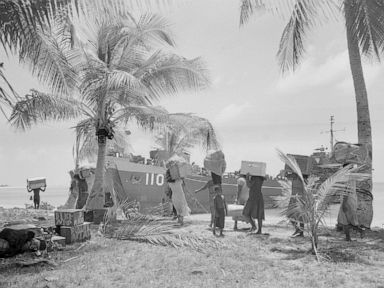
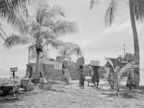

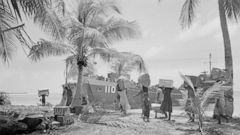

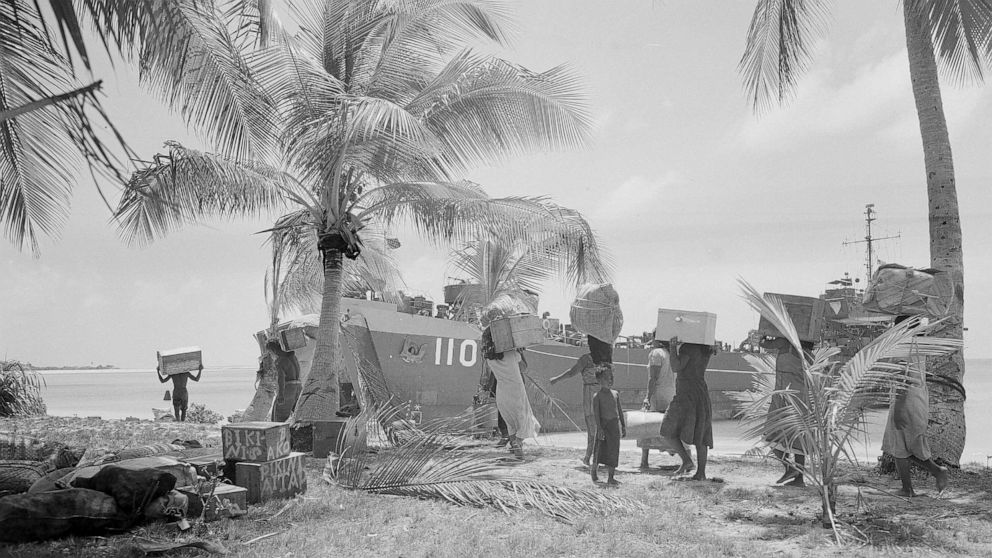
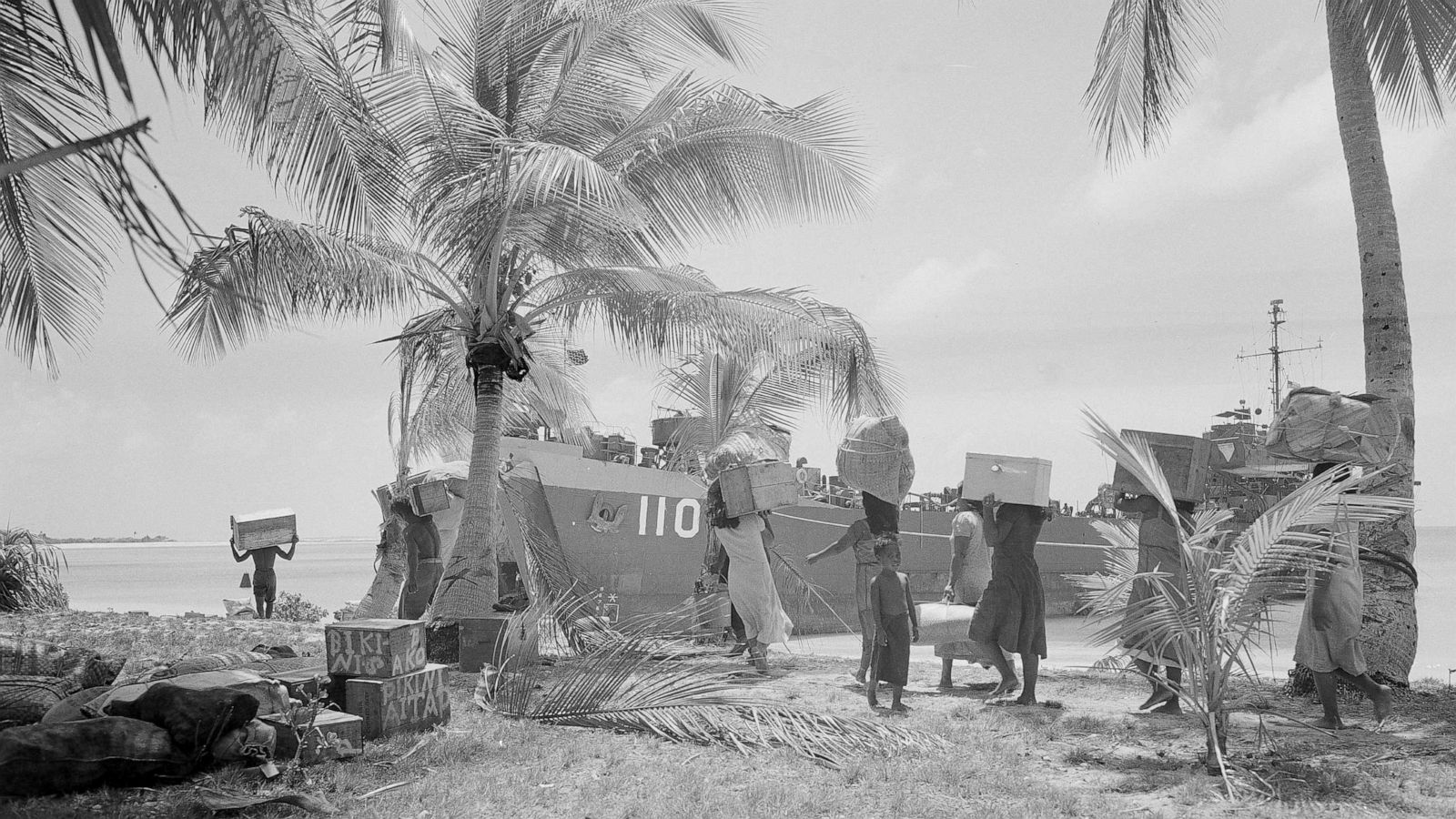
Jonithen Jackson remembers the stories his mother and grandmother used to tell him before bed, Marshallese folk stories teaching lessons of hope and kindness. Embedded in these stories, Jackson tried to understand why his people couldn’t live on their home island anymore.
“Everybody’s sick; they get sick and die young,” Jackson told ABC News. “When the bomb is erupted, the white powder they come to on the water… everybody realize, ‘oh, that’s the poison.’”
Jackson’s home island is Enewetak Atoll, where the United States tested 43 nuclear bombs from 1948 to 1958.
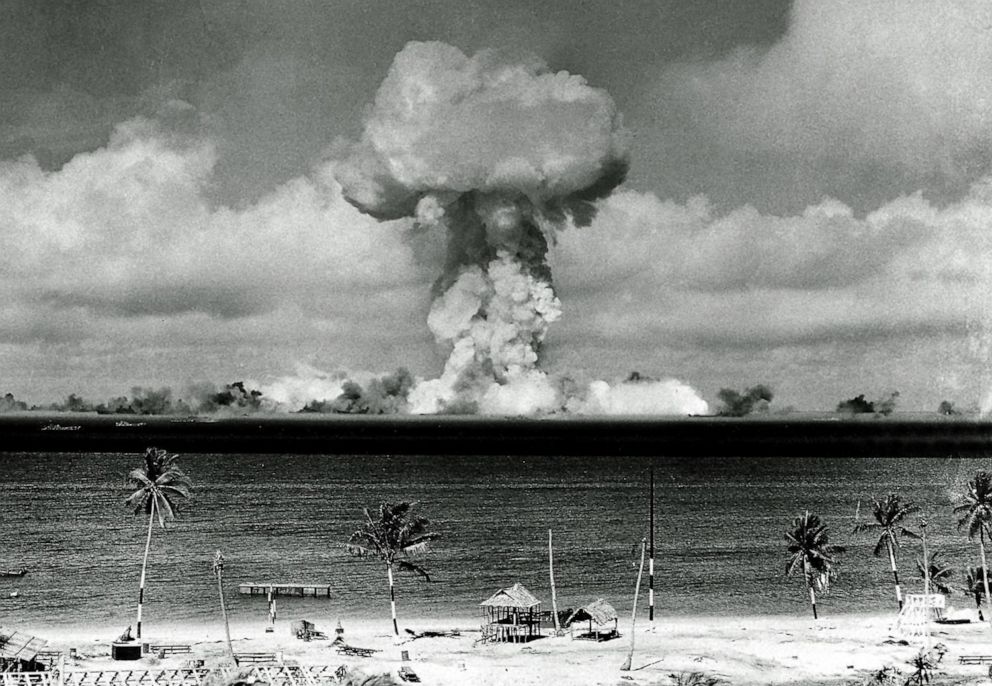
Mushroom cloud forms over Bikini Lagoon in the Marshall Islands, May 1946.
AP Photo
In the past several decades, thousands of migrants have been arriving in the United States from the South Pacific, a region called Micronesia. They often arrive in search of better health care, education and jobs and, because their migration status is so unique, Micronesians face unique challenges in the United States.
Jackson now calls home the remote lava flats of Mauna Loa, the southernmost point of Hawaii’s Big Island in a town called Ocean View Estates. Here, small homes are interspersed between patches of black lava flats and young jungles. Children wait beside the road for buses to ferry them on a long commute to school. A truck drives by to deliver water to homes. Until recently residents had to drive more than 30 minutes to the nearest town to get water.
“I talk to the kids around here and said, ‘Don’t do bad things because this is not our island and if they like us to go back, we go back,’” he said.
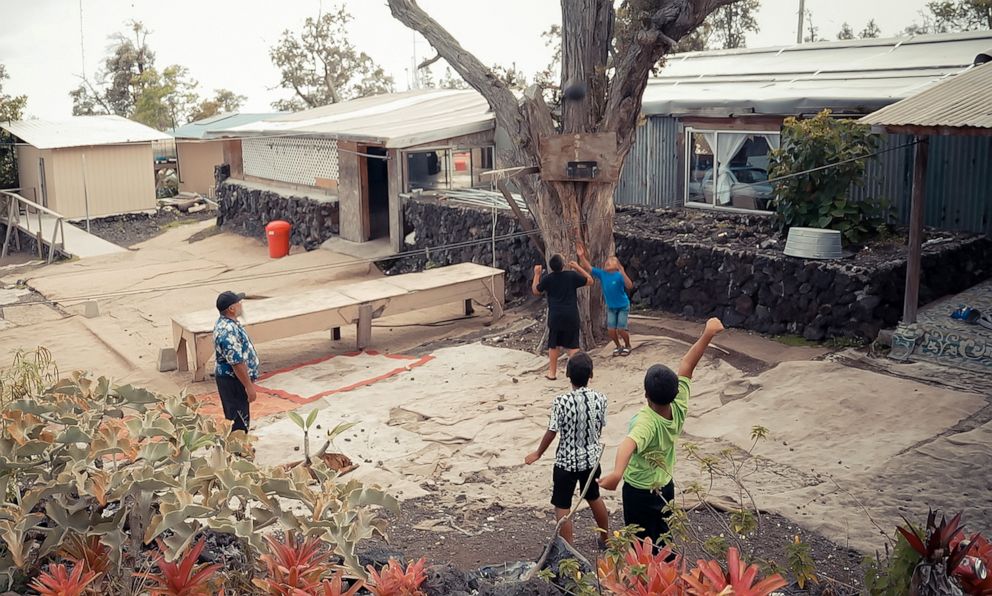
Children play basketball at Jonithen Jackson’s home in Ocean View, Big Island.
Seiji Yamashita/ABC News
Jackson was the first to move in 1991, and now more than 300 Marshallese have followed his footsteps, building their homes in the remote community. Jackson, a mechanic, was looking for a place where Marshallese could live together and feel a sense of community like they did back home. Ocean View Estates was the most affordable option. Jackson receives $82 every three months from a U.S. government fund for affected atolls in the Marshall Islands.
Many Marshallese and Micronesians in Hawaii gravitate toward historically migrant communities. Many live in places like Waipahu or Kalihi, where public housing is more available.
There are roughly 18,000 Micronesians living in Hawaii at any given time, but exact numbers are hard to come across because of their migration status. Micronesians are able to freely travel to the United States without a visa thanks to the Compacts of Free Association (COFA). The citizens from the three COFA states – Republic of Palau, Federated States of Micronesia and the Marshall Islands – can live, work and receive some public welfare benefits in exchange for the United States having military access to the region.
“It’s our American commitment to those that suffer the ill effects of nuclear testing and other challenges from the military operation we had in the Pacific,” Gov. Josh Green told ABC News. “But it creates one of the most complicated social and strategic challenges that anyone’s going to ever see.”
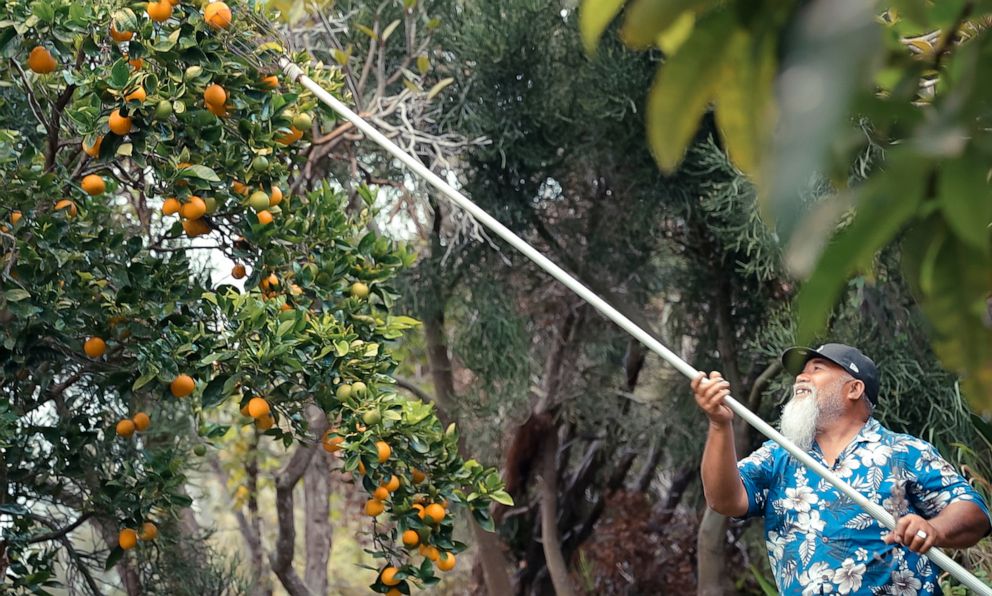
Jonithen Jackson picks oranges from his home in Ocean View, Big Island.
Seiji Yamashita/ABC News
Green knows the social challenges well, stemming from his time as a physician on the Big Island. He treated patients from Ocean View and many were Micronesian. “It was shocking. I mean, things that you don’t even see in textbooks,” said Green. “When you have people that had exposures to contamination and radiation, you have some pretty unusual health problems. And a lot of people had their health issues neglected for decades.”
Medical care is one of the main reasons why many Micronesians arrive to Hawaii. Dr. Neal Palafox, a physician and professor at the University of Hawaii, knows firsthand, having practiced medicine in the Marshall Islands.
“Sometimes you run out of medicines. We don’t have antibiotics, we run out of surgical sutures. We reused gloves,” Dr. Palafox told ABC News. “I was thinking, how is this, this was at the time a U.S. territory.”
On the Marshall Islands, Dr. Palafox regularly saw cases of tuberculosis and Hansen’s disease, also known as leprosy. Many health ailments were treatable with textbook treatments, according to Palafox.
“You read about these illnesses, they tell you they don’t exist anymore or, you know, they don’t exist in this country anymore,” he said.
But Palafox also saw diseases that were very rare and extreme cases he attributes to the United States’ nuclear testing in the region. Seeing rare cancers and lymphomas were common, but there were also diseases linked to drastic lifestyle changes like high rates of diabetes. When the United States forced evacuations of islands like Enewetak, residents could no longer eat their traditional foods, unable to farm or fish on their lands. Many were given canned imported foods.
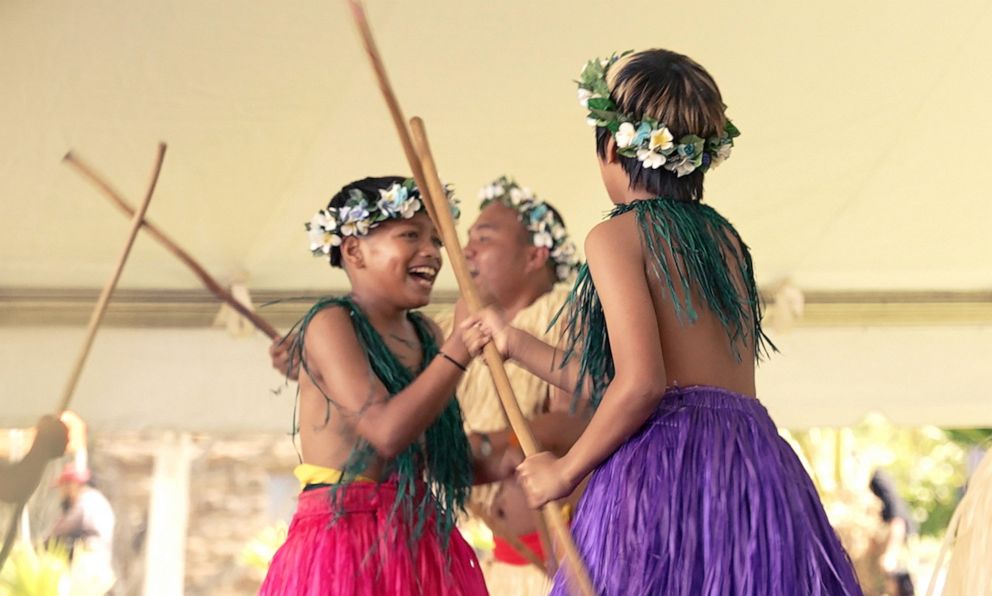
Micronesian children perform at the Celebrate Micronesia Festival in Oahu.
Seiji Yamashita/ABC News
The Marshall Island residents found their livelihoods disrupted when dust from the bomb tests covered areas normally available for fishing, Dr. Palafox told ABC News.
“That’s contaminated, they’re forced into a place where they can’t fish, can’t raise your own crops, are given canned foods in an inadequate health system,” he said.
Laninbwij Nelson moved to Waipahu, Oahu, while he was in eighth grade after his father needed medical treatment. At the time, Nelson did not speak English, and he entered a school environment where very few Micronesians graduate. Only 50 percent of ninth-grade students from Micronesia graduate high school. Every year, hundreds gather at Waipahu High School to celebrate Marshallese graduates.
“The first party we had was my year. And then we only have five students,” Nelson told ABC News.
This year that number was 17.
“I saw a lot of Marshallese students graduate. I was like, ‘This is a lot and this is improving.’”
Helping students like Nelson is Eola Lokebol, a bilingual school home assistant for Oahu’s Leeward District. Although Lokebol works for the school district, her work takes her beyond it, accompanying families to medical visits or assisting with government documents.
“Families are not able to get a doctor’s appointment or medical insurance card or find a place to live,” she told ABC News. “It’s not just us being here helping them. It’s also just helping them survive.”But these families have even more to overcome.
“When they have to hear it on the news or in the community about how Micronesians are dirty, they should go back to their country, it pains me. Why? What did we do? What did our kids do to deserve this?” Shanty Asher, Pacific Islander Liaison, Office of Economic Revitalization, told ABC News.
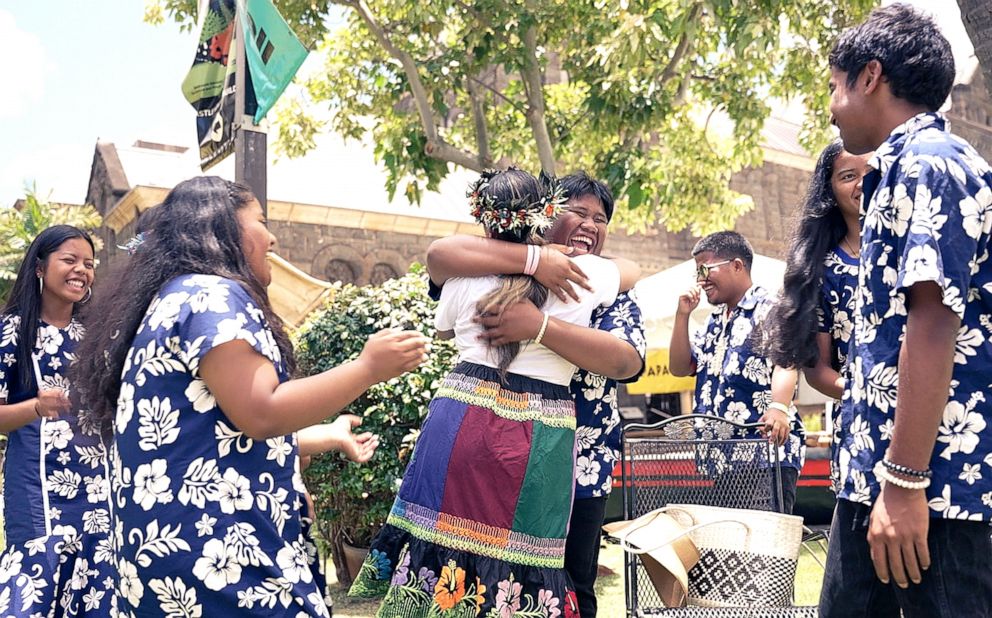
Marshallese students from Waipahu High School embrace Shanty Asher at Celebrate Micronesia Festival in Oahu.
Seiji Yamashita/ABC News
At events like the Celebrate Micronesia Festival in Oahu, Micronesians try to take back the narrative, celebrating the 20-plus languages and hundreds of islands and cultures they come from.
“They are performing with so much courage, bravery and talent,” Asher said.
“When we come, people don’t know about us,” she said.
Jackson’s community in Ocean View has faced its fair share of challenges: The community only recently had a water pump installed a few miles away from their homes and the community has limited access to health care. It was ravaged by the COVID pandemic.
Many in the community cite prejudice, both individual and systemic, for the challenges. But on any given Sunday, the strength of the Marshallese community is visible. Hundreds gather in a church Jackson built on his property.
Looking into the crowd, Jackson sees generations of Marshallese living happily in Hawaii thanks to him.
“One day I will take them, one day I will take them to Marshall Island. And show them this is your land. This is your home. Where your grandma, grandpa come from.”
